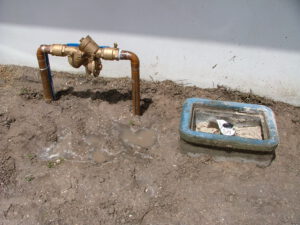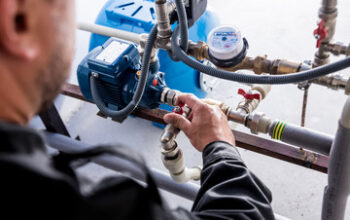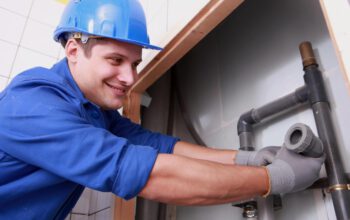Backflow installation is a requirement for most commercial and industrial buildings. It can also be required in single-family homes with auxiliary water. Plumbing Express, Inc. specialists actively inspect auxiliary water sources for backflow hazards.
Backflow can contain dangerous pathogens like Shigella, which causes diarrhea and gastroenteritis. It can also cause a salmonella infection. These infections can be fatal.
The cost of backflow installation varies depending on the type and size of the system. It can range from as low as $135 for simpler systems to as high as $1,000 for huge backflow devices that can cover a large network of pipes in a building or complex. Backflow installation is a vital part of keeping your water clean and safe. It also helps prevent contaminated water from transferring back into the public supply. This is especially important for commercial and industrial water systems that may be connected to the public water supply.
In addition to the cost of the device itself, you must factor in installation costs and permit fees. A permit fee is typically around $50, but this varies by state and municipality. If you’re unsure of what to expect, contact your local city for more information.
Backflow valves are designed to ensure that water flows in one direction and doesn’t contaminate your home or business. They are an essential component of any plumbing system, and they’re required by most states. There are many different types of backflow prevention devices, but the most common is a double check valve assembly (DCVA) or pressure vacuum breaker assembly (PVBA). If you’re not sure what type of backflow preventer you need, consult a professional.
You can find a backflow prevention device for your home or business at a number of locations, including online stores and local hardware stores. However, it’s important to get a professional backflow preventer installer to install the device correctly and test it regularly. This is a requirement for all backflow prevention assemblies, and failure to comply can result in fines or even a shut-off of your water supply.
The best way to protect your family and your employees from backflow is to install a backflow preventer. Backflow events can be dangerous, and they can cause serious illnesses and even death. A backflow preventer is a crucial investment for your family, and it’s worth the expense to keep your loved ones safe.
Benefits
Backflow prevention devices help ensure that you have a clean supply of water for drinking, cooking, bathing, and sprinkler use. This is particularly important in areas that have high contaminant levels. These devices can protect you from dirty water and prevent contamination from chemicals, dirt, and toxins in your household plumbing. Backflow prevention devices can include air-gap drain kits, dual check valve assemblies, and other devices to protect your family’s health and your home’s plumbing system.
The main purpose of a backflow prevention device is to keep potable and non-potable water separate. This is especially important at cross-connection points, which are locations where pipes with potable and non-potable water intersect. The most common example of this is your garden hose. When you spray fertilizer or weed killer on your plants, the dirty water flows through the hose into your house’s plumbing system. Without a backflow prevention device, this dirty water could make its way into your municipal water supply and contaminate the city’s clean water.
Having a backflow prevention device can protect you from waterborne diseases such as Salmonella, Campylobacter jejuni, and Giardia. These bacteria are found in plumbing backflow and can cause serious illness in humans. In addition to the risk of disease, backflow can damage your pipes and lead to costly repairs.
Backflow prevention systems prevent backflow by ensuring that the pressure of the water coming into your home is greater than the pressure of the water going out. They can also detect backflow and shut off your water supply.
If your house has a backflow prevention device, it will keep contaminants such as dirt, chemicals, and pesticides from entering the water supply. This can help you avoid illness and costly repairs. In addition, it can help you save money on your energy bills.
The best way to protect your backflow preventer from contamination is by keeping it above ground. This will allow the water jurisdiction to inspect and test it without having to worry about getting it wet or making a mess. This will also eliminate the need to work with corrosive or toxic materials, which can be difficult for inspectors and technicians.
Installation process
Backflow installation is a complex process that involves the use of different types of devices. These devices create a physical barrier between your water supply and any potential backflow of contaminants. The installation process is not cheap, but it is necessary to protect your family from backflow contamination.
The first step in the installation process is to identify the type of backflow preventer that will work best for your property. There are many different options available, from simple check valves to air gaps and pressure vacuum breaker systems. Regardless of the type of device you choose, it is important to hire an experienced technician to install it properly. Incorrect installation can lead to expensive repairs down the road.
After the backflow prevention assembly is installed, it must be tested. The inspection must be performed by a certified backflow inspector who is registered with the New York State Department of Health. Before the inspection can take place, the water must be turned off. Upon completion of the test, the inspector will submit the report to the town backflow office.
If your backflow device is located inside a building, it should be placed in a protected enclosure that meets ASSE 1060 standards. This will help protect the backflow preventer from tampering and harsh environmental conditions. The enclosure should also be able to maintain the proper temperature and contain the required drainage.
It is also a good idea to install your backflow device outside of the building. This will make it much easier for maintenance and testing personnel to access the device. In addition, installing the device outside will reduce the risk of water contamination.
The backflow preventer should be located at least twelve inches above the ground and a maximum of four feet high. It should also be located in a location that is easy to reach and has ample clearance around it for testing and servicing.
If you are replacing an existing backflow preventer, it is important to note that the replacement must meet current code requirements. It is also important to remember that the testable assembly will still need to be tested every year.
Maintenance
Backflow prevention is a vital safety component of water systems, and it is important that the devices are properly maintained. If a backflow preventer is not properly maintained, it can be susceptible to contamination and may even stop working altogether. It is crucial that you have your device tested on a regular basis to ensure it is working correctly. During these tests, you can check for any backflow problems and have them addressed immediately.
If you own a single-family residence, EBMUD will install and test the backflow preventer at no cost to you. However, if you connect your water system to any source other than the public system (like a well), you will need to install and maintain a backflow preventer on your property.
When repairing a backflow prevention assembly, the repair technician must be familiar with the manufacturer’s specifications and repair manual. This will help them determine which parts to replace and what size they should be. The repair process also involves evaluating the work area around the backflow preventer to identify any restrictive conditions. This may include a requirement for safety barricades or entry restrictions to ensure the repair technician and other workers do not get harmed while performing the repair.
It is also important to note that it is against code to tamper with a backflow assembly. For example, changing the rubber parts from those provided by the manufacturer will affect the operation of the assembly and possibly void any approvals. Likewise, it is illegal to modify the seals of a backflow valve or hose bib assembly, and you should always use replacement parts from the manufacturer to avoid this issue.
A backflow prevention assembly is a necessity in apartment and condominium buildings, restaurants, and other commercial establishments. It is used to protect against backflow that can occur at any cross-connection and contaminate the city’s clean water supply. It is critical that the backflow preventer be tested on a yearly basis to ensure it is working properly and protecting your water supply.
To prevent a backflow problem, you should have your backflow system tested annually by a qualified backflow testing service. These professionals can identify potential issues and correct them before they become serious. In addition, they can provide you with a detailed report of the results that you can keep for your records.


